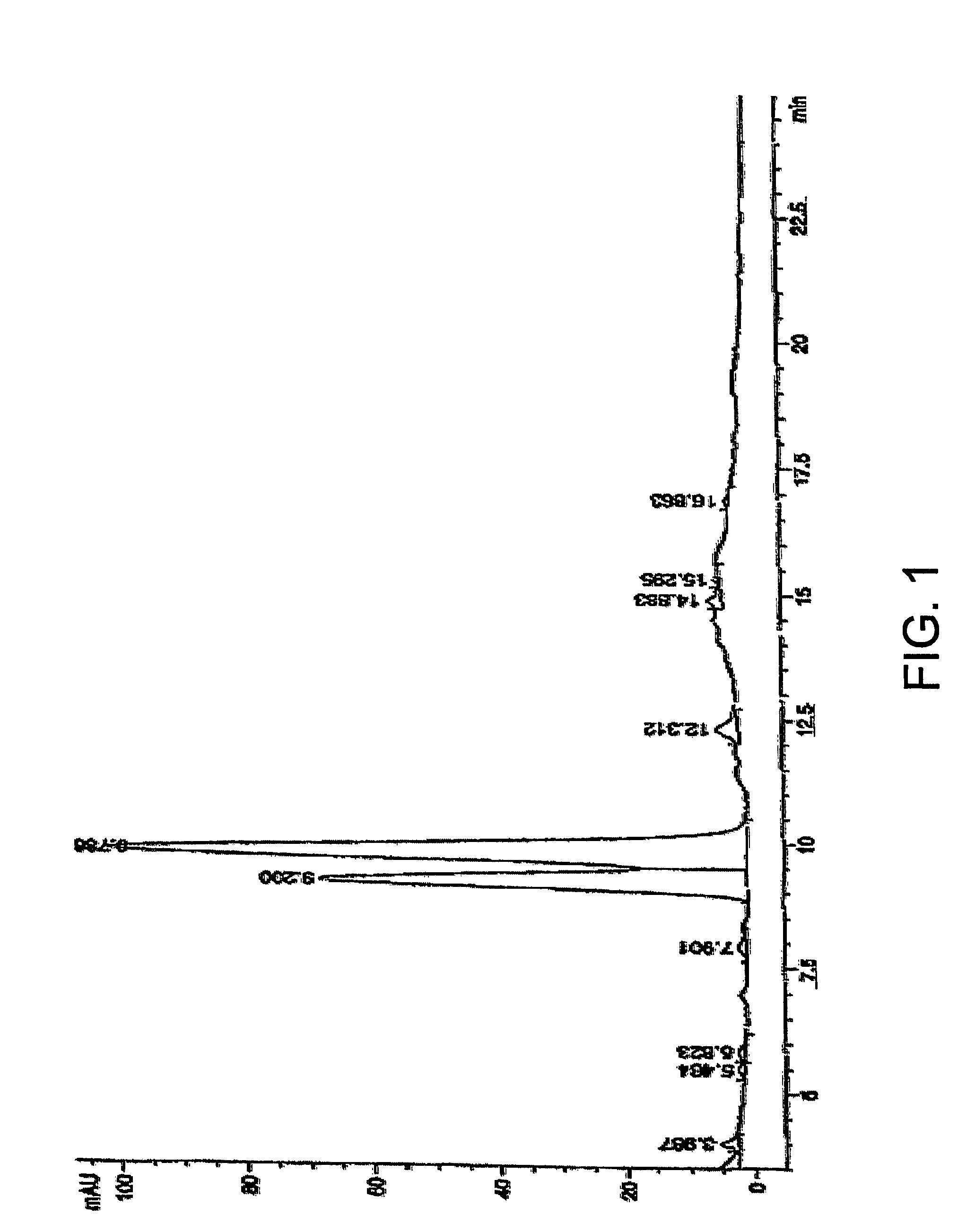Stabilized anthocyanin extract from Garcinia indica
an anthocyanin and extract technology, applied in the field of plant-derived natural red pigments, can solve the problems of not giving the exact hues that are desired in some food and beverage products, many of the existing red colorants have distinct disadvantages in regard to suitability for human consumption, and the availability of natural sources is too limited for widespread or commercial us
- Summary
- Abstract
- Description
- Claims
- Application Information
AI Technical Summary
Benefits of technology
Problems solved by technology
Method used
Image
Examples
example 1
[0034]1 Kg of Garcinia indica fruits are cut into small pieces of 25 mm to 50 mm size and soaked in 2 liters of demineralized water at a temperature in the range of 15° C. to 60° C. for not less than 12 hours. The resulting mixture is then pulped using a conventional food mixer to produce a thick pulp. The pulp is mixed with an additional 2 liters of demineralized water. The resulting thinned pulp is then filtered to remove all suspended particles, yielding about five liters of clear solution. This solution is passed through a column containing 500 ml of Amberlite IRA™ 120 or Dowex™ 50 W×8 or Tulsion™ T-42 MP, or Tulsion™ T-72 MP. The eluates are monitored for color. When the color passes unabsorbed, the column operation is stopped, and the column is washed with 5 liters of demineralized water, until only clear, colorless water emerges from the column outlet. The contents of the column are then eluted with 2 liters of 8% methanolic hydrochloric acid. The eluent is collected and conc...
example 2
[0035]The procedure of Example 1 is repeated except that instead of adding the antioxidant to the concentrate, the concentrate is placed in an aseptic package or container under nitrogen atmosphere to maintain stability of the color. Alternatively, instead of using a nitrogen atmosphere, another suitable inert or non-oxidative atmosphere is used, such as helium gas, or by drawing a vacuum.
example 3
[0036]The procedure of Example 1 is repeated except that after the antioxidant is mixed with the concentrate, the resulting mixture is aseptically packaged in a non-oxidizing atmosphere, as described in Example 2.
PUM
| Property | Measurement | Unit |
|---|---|---|
| temperature | aaaaa | aaaaa |
| temperature | aaaaa | aaaaa |
| wt % | aaaaa | aaaaa |
Abstract
Description
Claims
Application Information
 Login to View More
Login to View More - R&D
- Intellectual Property
- Life Sciences
- Materials
- Tech Scout
- Unparalleled Data Quality
- Higher Quality Content
- 60% Fewer Hallucinations
Browse by: Latest US Patents, China's latest patents, Technical Efficacy Thesaurus, Application Domain, Technology Topic, Popular Technical Reports.
© 2025 PatSnap. All rights reserved.Legal|Privacy policy|Modern Slavery Act Transparency Statement|Sitemap|About US| Contact US: help@patsnap.com



